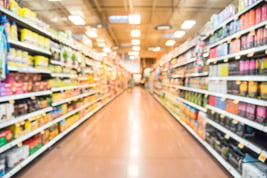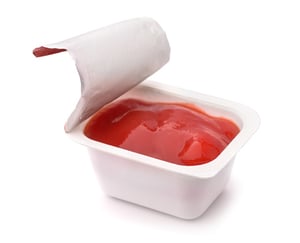 Before developing the rollstock structure for an extended shelf-life application, defining shelf-life requirements is a critical first step in the process. We're all familiar with the little "sell by" date stamped on the packaging of our shelf-stable food products, however, what really goes into this? At first glance it may seem simple, but in reality it is a function of a variety of factors, from food product, to part design, processing conditions and more that ultimately contribute to meeting desired shelf-life requirements.
Before developing the rollstock structure for an extended shelf-life application, defining shelf-life requirements is a critical first step in the process. We're all familiar with the little "sell by" date stamped on the packaging of our shelf-stable food products, however, what really goes into this? At first glance it may seem simple, but in reality it is a function of a variety of factors, from food product, to part design, processing conditions and more that ultimately contribute to meeting desired shelf-life requirements.
With ICPG's custom development process, we consider all factors including barrier specifications, shelf-life expectations, part geometry, material attributes and part handling to refine the part design for optimal performance. Once these specifications are defined, we enter into the rollstock development stage, where material choices are meticulously refined to meet all requirements.
Continue reading for a list of factors to consider that effect shelf-life requirements:
- Product/Food Type: Different foods, even under very similar processing conditions and packaging methods could have broadly different needs that need to be considered to determine if low, medium or high barrier packaging is needed.
 Processing & Sterilization Technique, Conditions and Environment: "Like" foods for example can be packaged using various sterilization methods such as in form-fill-seal applications where either chemical (aseptic H202) or thermal sterilization (steam) methods are employed to ensure a safe and sterile environment for extending product shelf-life.
Processing & Sterilization Technique, Conditions and Environment: "Like" foods for example can be packaged using various sterilization methods such as in form-fill-seal applications where either chemical (aseptic H202) or thermal sterilization (steam) methods are employed to ensure a safe and sterile environment for extending product shelf-life.- Distribution Environment: Distribution channels using refrigerated warehouses and trucks may not necessarily need barriers to bring their product to market, whereas standard distribution conditions might require EVOH or other barrier strategies.
- Retail Conditions: Retail storage conditions such as temperature (refrigeration vs. shelf-stable) and light conditions may dictate processing and packaging methods and materials.
- Temperature: Processing, packaging, storage, distribution and retail temperatures all effect packaging methods and materials.
- Light Exposure & Product UV Sensitivity: Some food products are sensitive to UV and other light wave degradation and may require use of opaque materials or specialty additives depending on methods and materials.
- Target Shelf-life Expectation: There is little standardization for shelf-life by product and it can be a point of differentiation as shelf-life will differentiate taste, smell and appearance.
- OTR and MVTR Barrier Properties: Requirements vary based on brand preference, product needs and all of the other conditions of this list.
- Aesthetics: Surface finish and clarity can be affected by processing conditions, packaging methods and materials. Color and clarity may mask or enhance consumer perception, and clarity may require additional UV additive or barrier strategies.
- Sustainability & Recyclability Requirements: Choosing materials that allow for mono-material recyclability and structures that allow for incorporation of PCR materials will enhance sustainability and offer circular economy solutions.
Ready to get started on your project? ICPG's team is ready to help refine requirements and establish specifications to optimize the performance of your extended shelf-life food product. For more information on our development process, download a copy of our ICPG Custom Development Process Infographic:





